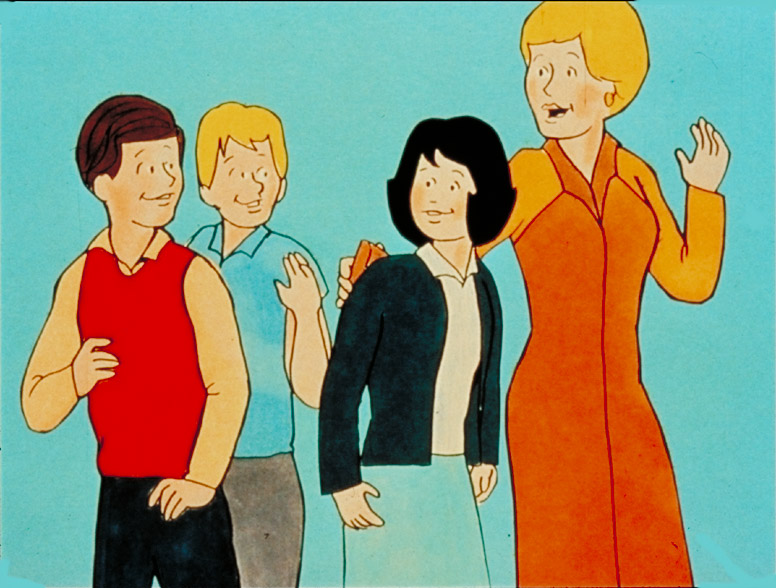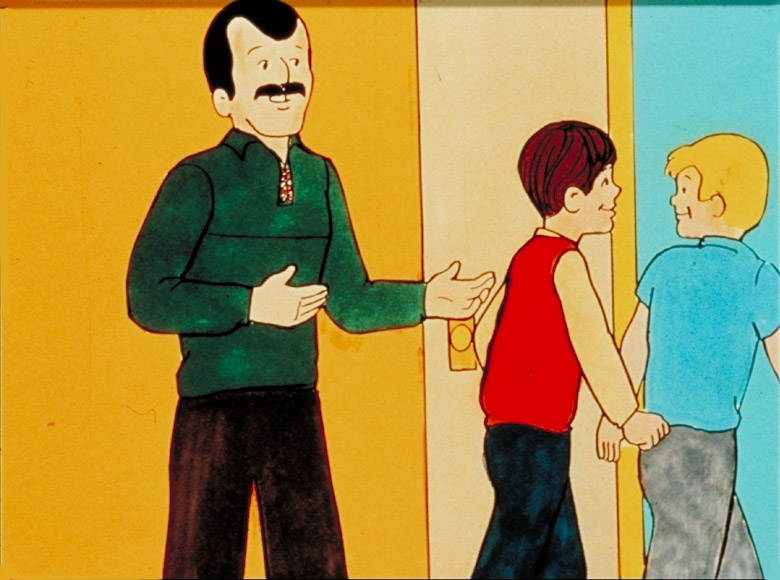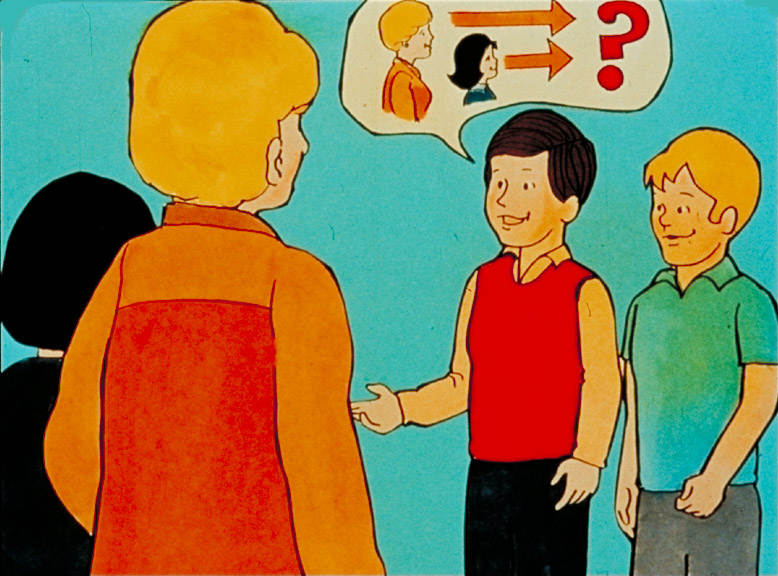
In Lesson 3 you will review previously learned material and you will also be introduced to some new information about verbs and pronouns. The lesson will contain the following information:
- Verbs – a review of the Group I є-ють, е-уть verbs which have been presented in Units I – V.
- Imperative Form – use of the imperative form of verbs for emphasis.
- Pronouns – review of the appropriate use of the second person plural.
|
Дієслова: І-а група
Verbs : Group 1 Conjugation |
The Group 1 є-ють verbs to which you have been introduced are as follows:
читати ----- мати ----- грати ----- питати ----- слухати
The Group 1 е-уть verb to which you have been introduced is as follows:
іти (йти)
You will recall that the first letter і changes to й if the previous word ends in a vowel.
V. Exercise 3.i
Complete the exercises below as a review of all verb conjugations.
|
мати |
|
грати |
|
читати |
|
я |
_____________ |
я |
_____________ |
|
я |
_____________ |
|
ти |
_____________ |
|
ти |
_____________ |
|
ти |
_____________ |
|
він |
_____________ |
|
він |
_____________ |
|
він |
_____________ |
|
вона |
_____________ |
|
вона |
_____________ |
|
вона |
_____________ |
|
ми |
_____________ |
|
ми |
_____________ |
|
ми |
_____________ |
|
ви |
_____________ |
|
ви |
_____________ |
|
ви |
_____________ |
|
вони |
_____________ |
|
вони |
_____________ |
|
вони |
_____________ |
|
питати |
|
слухати |
|
іти(йти ) |
|
я |
_____________ |
я |
_____________ |
|
я |
_____________ |
|
ти |
_____________ |
|
ти |
_____________ |
|
ти |
_____________ |
|
він |
_____________ |
|
він |
_____________ |
|
він |
_____________ |
|
вона |
_____________ |
|
вона |
_____________ |
|
вона |
_____________ |
|
ми |
_____________ |
|
ми |
_____________ |
|
ми |
_____________ |
|
ви |
_____________ |
|
ви |
_____________ |
|
ви |
_____________ |
|
вони |
_____________ |
|
вони |
_____________ |
|
вони |
_____________ |
1. |
Що ти маєш? (журнал) _______________________________________________ |
|
|
|
2. |
Чи Лавра має зошит? (Так, ...) _________________________________________ |
|
|
|
3. |
Що Давид і Тарас мають? (гроші) _______________________________________ |
|
|
|
4. |
Чи я маю квитки? (Так, ...) _____________________________________________ |
|
|
|
5. |
Що мама має ? (квитки) _______________________________________________ |
|
|
|
|
V. Exercise 3.ii
Complete the exercises below with the correct form of the verbs given.
|
читати |
|
мати |
|
грати |
|
я |
_____________ |
я |
_____________ |
|
я |
_____________ |
|
ти |
_____________ |
|
ти |
_____________ |
|
ти |
_____________ |
|
він/вона |
_____________ |
|
він/вона |
_____________ |
|
він/вона |
_____________ |
|
хто |
_____________ |
|
хто |
_____________ |
|
хто |
_____________ |
|
ми |
_____________ |
|
ми |
_____________ |
|
ми |
_____________ |
|
ви |
_____________ |
|
ви |
_____________ |
|
ви |
_____________ |
|
вони |
_____________ |
|
вони |
_____________ |
|
вони |
_____________ |
1. |
читати |
Мама ______________________ часопис. |
|
|
|
2. |
мати |
Хто __________________ квитки? |
|
|
|
3. |
грати |
Хлопці __________________ у теніс. |
|
|
|
4. |
читати |
Чи ти __________________ ? |
|
|
|
5. |
мати |
Ми ___________________ гроші. |
|
|
|
6. |
грати |
Жінка ___________________ в ґольф. |
|
|
|
7. |
читати |
Дівчата ___________________ словник. |
|
|
|
8. |
мати |
Я _________________ квитки. |
|
|
|
9. |
грати |
Павло й Віра _____________________ у карти. |
V. Exercise 3.iii
Complete the exercises below with the correct form of the verb іти (йти).
іти - йти |
|
|
|
|
я |
_____________ |
|
ми |
_____________ |
|
ти |
_____________ |
|
ви |
_____________ |
|
він |
_____________ |
|
вони |
_____________ |
|
вона |
_____________ |
|
|
|
|
хто |
_____________ |
|
|
|
1. |
Мама _________________ на футбол. |
|
|
2. |
Чи ти _________________ на баскетбол? |
|
|
3. |
Оленка _________________ на шахи. |
|
|
4. |
Я не ________________ на теніс. |
|
|
5. |
Куди ви ________________ , хлопці? |
|
|
6. |
Ми ___________________ на волейбол. |
|
|
7. |
Тепер хлопці _________________ на шашки. |
|
|
8. |
Хто ____________________ на бейсбол? |
|
|
9. |
Чи Тарас і Роман ____________________ на теніс? |
|
|
10. |
Куди ти ___________________ , Тарасе? |
Наказова Форма - Imperative Form
The Imperative Form of a verb is a command which tells someone to do something or to act immediately and without question.
You have been introduced to two examples of the Imperative Form in this course. Recall the following phrases:
Ходімо на футбол!
Let’s go to the football game |
 |
|
Ходімо, Оленко! До побачення, хлопці!
Let’s go, Olenka! Good-bye, boys! |
 |
|
The word ходімо can mean either ‘Let’s go’ or ‘Come on’, phrases which are commonly used in English. The Imperative Form of the verb іти ( to go) also appears in the course, as shown below.
Ну , добре. Ідіть!
Well, fine. Go! |
 |
|
The literal meaning of Ідіть! is ‘Go!’ but it is understood to mean ‘Go ahead’, a phrase commonly used in English.
Review: Second Person Plural
In Dialogue 5, the pronoun ви was used (or implied) in three phrases, as shown below.
Як (ви) ся маєте, пані Козак?
|
 |
|
Куди ви йдете? |
 |
|
А ви куди? |
 |
|
You will recall from Unit I that there is a cultural distinction when using the second person plural ви (Ви). In the first example, Roman is showing cultural respect for the mother of his friend Taras by addressing her in the second person plural. In the second and third examples, the plural form is used to address more than one person.
If you have a familiar or more casual relationship with family members or friends, the second person singular ти is more commonly used. For example, some children may address their parents as ти, reserving the term Ви for grandparents, relatives or strangers.
V. Exercise 3.iii
Insert the appropriate forms of ти, ви or Ви in the sentences below.
- Мамо, чи __________ вдома?
- Іване, де __________?
- Пані Козак, чи __________ тут?
- Ларисо, чи __________ в Едмонтоні?
- Пане Білан, чи __________там?
- Марусю й Петре, де __________?
- Тату, чи __________вдома?
- Чи __________ жінка, пані Козак?
- Бабо, де __________?
- Чи __________ вдома, Романе?
Practise reading each sentence aloud, using proper intonation and expression.
|
|
|








